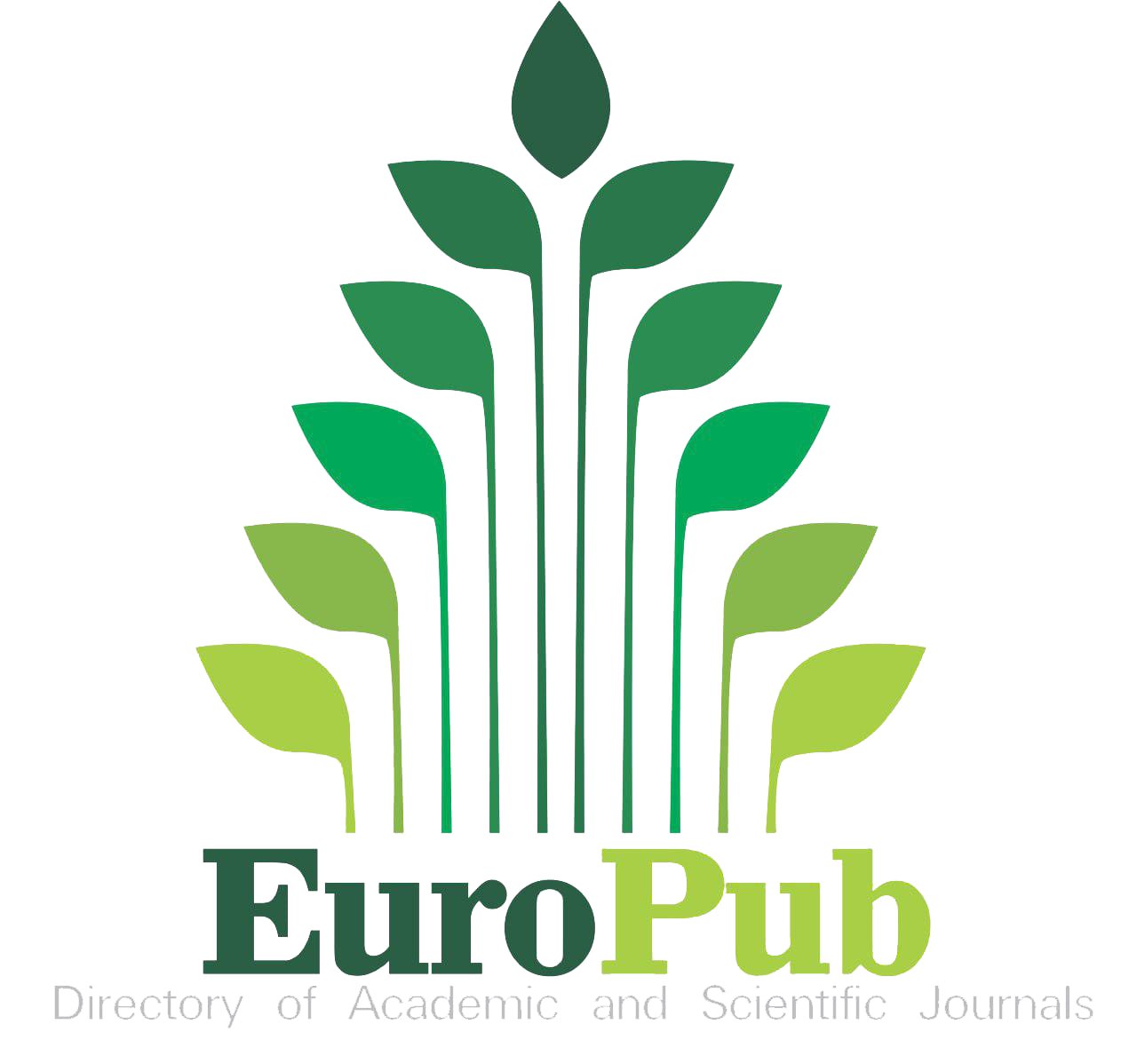Abstract
Hydrogen has been considered a future energy carrier for decades and the demand for hydrogen in refineries is always upward due to the revival of new technologies. The steam methane reforming method is frequently employed because of its high hydrogen generation efficiency at a cheap cost and minimal environmental footprint. However, depending on the type of feedstock, one unit of hydrogen generates 9-10 units of CO2 that need to be treated for environmental sustainability. Therefore, the optimization of hydrogen production and CO2 capture is critical to address the issue. The simulation research was conducted to anticipate and optimize steam reforming using Aspen HYSYS. A conversion-type reactor was used to develop this simulation-based model. The primary goal of this work is to investigate and optimize hydrogen production efficiency while mitigating CO2 by varying process parameters. The CO2 capture efficiency was investigated at the different yields for hydrogen production and a maximum of 98.8% absorption of the CO2 was achieved using the carbon capture system proposed in the current study. Later, the Aspen Energy Analyzer tool revealed potential improvements for energy and cost optimization.
Recommended Citation
Sakib, Ahmed Nazmus; Shabab, Ahnaf Tahmid; Ahmed, Firoz; and Rahman, Ashiqur
(2024)
"Optimization of Carbon Capture in Hydrogen Production via Steam Reforming: A Simulation-Based Case Study,"
Al-Bahir: Vol. 4:
Iss.
1, Article 5.
Available at: https://doi.org/10.55810/2313-0083.1051
References
[1] Asadi J, Kazempoor P. Techno-economic analysis of membrane-based processes for flexible CO2 capturing from power plants. Energy Convers Manag 2021;246:114633. https://doi.org/10.1016/j.enconman.2021.114633.
[2] Hossain MR, Khatun AA, Ahmed MF, Faroque MO, Sobahan MA. Experimental behavior of bituminous mixes with waste concrete aggregate experimental behavior of bituminous mixes with waste concrete aggregate 2020;9(3):31e50.
[3] The intergovernmental Panel on climate change (IPCC). Global warming of 1.5 o C. 2018. https://www.ipcc.ch/sr15/. [Accessed 25 December 2022].
[4] Fetisov V, Gonopolsky AM, Zemenkova MY, Andrey S, Davardoost H, Mohammadi AH, et al. On the integration of CO2 capture technologies for an oil refinery. Energies (Basel). 2023;16(2):865. https://doi.org/10.3390/en16020865.
[5] Felseghi RA, Carcadea E, Raboaca MS, Trufin CN, Filote C. Hydrogen fuel cell technology for the sustainable future of stationary applications. Energies (Basel) 2019;12(23):4593. https://doi.org/10.3390/en12234593.
[6] Ahmed F, Hasan Roni M, Rahman A, Salam SMA. Comparative investigations on microextraction and conventional air sampling techniques: challenges and future directions. Al-Bahir J Engineering and Pure Sci 2023;3(2):5. https://doi.org/10.55810/2312-5721.1045.
[7] Khojasteh Salkuyeh Y, Saville BA, MacLean HL. Technoeconomic analysis and life cycle assessment of hydrogen production from natural gas using current and emerging technologies. Int J Hydrogen Energy 2017;42(30):18894e909. https://doi.org/10.1016/j.ijhydene.2017.05.219.
[8] International Energy Agency. Putting CO2 to use- creating value from emissions. 2019.
[9] RENEE CHO. Capturing carbon's potential: these companies are turning CO2 into profits. State of planet. Columbia Climate School; May 29, 2019.
[10] Ahmed F, Hutton-prager B. Influence of bulk and surface interactions from thick , porous , soil-based substrates on the spreading behavior of different viscosity oils. Environmental Challenges 2021;3:100045. https://doi.org/10.1016/j.envc.2021. 100045.
[11] Chakraborty SC, Qamruzzaman M, Zaman MWU, Alam MM, Hossain MD, Pramanik BK, et al. Metals in ewaste: occurrence, fate, impacts and remediation technologies. Published online April 8 Process Saf Environ Protect 2022. https://doi.org/10.1016/J.PSEP.2022.04.011.
[12] Jolaoso L, Zaman SF. Catalytic ammonia decomposition for hydrogen production: utilization of ammonia in a fuel cell. In: Inamuddin Boddula R, Asiri AM, editors. Sustainable ammonia Production. Springer International Publishing; 2020. p. 81e105. https://doi.org/10.1007/978-3-030-35106-9_5.
[13] U.S. Department of Energy. Hydrogen production and distribution j alternative fuels data center. https://afdc.energy.gov/ fuels/hydrogen_production.html. [Accessed 31 December 2022].
[14] Clean Hydrogen Partnership, European Union. Hydrogen roadmap europe: a sustainable pathway for the European energy transition. 2019. https://www.h2haul.eu.
[15] Fuel Cell & Hydrogen Energy Association (FCHEA). US. Road map to a US hydrogen economy: reducing emissions and driving growth across the nation. 2019. www.fchea.org.
[16] Gummer J. Hydrogen in a low-carbon economy. Committee on climate change. 2018. https://www.thecec.org.uk/wpcontent/%20uploads/2018/11/Hydrogen-in-a-low-carboneconomy.
[17] Bruce S. National hydrogen roadmap- pathways to an economically sustainable hydrogen industry in Australia. Australia’s National Science Agency; 2018. https://www. csiro.au.
[18] BMWi, Federal Ministry of Education and Research. The national hydrogen strategy: the federal government. 2021. https://www.bmbf.de/files/bmwi_Nationale%20Wasserstoff strategie_Eng_ s01.pdf. [19] IEA. The future of hydrogen: seizing today's opportunities. International Energy Agency; 2019. https://www.iea.org.
[20] Amran UI, Ahmad A, Othman MR. Kinetic based simulation of methane steam reforming and water gas shift for hydrogen production using aspen plus. Chem Eng Trans 2017;56:1681e6.
[21] Zamaniyan A, Behroozsarand A, Ebrahimi H. Modeling and simulation of large scale hydrogen production. J Nat Gas Sci Eng 2010;2(6):293e301. https://doi.org/10.1016/j.jngse.2010. 10.004.
[22] Department of Energy. Fact of the month May 2018: 10 million metric tons of hydrogen produced annually in the United States. May 2018. https://www.energy.gov/eere/ fuelcells/fact-month-may-2018-10-million-metric-tonshydrogen-produced-annually-united-states. [Accessed 31 December 2022].
[23] Kumar A, Singh R, Sinha ASK. Catalyst modification strategies to enhance the catalyst activity and stability during steam reforming of acetic acid for hydrogen production. Int J Hydrogen Energy 2019;44(26):12983e3010. https://doi.org/10. 1016/j.ijhydene.2019.03.136.
[24] Shiva Kumar S, Himabindu V. Hydrogen production by PEM water electrolysis e a review. Mater Sci Energy Technol 2019;2(3):442e54. https://doi.org/10.1016/j.mset.2019.03.002.
[25] Chi J, Yu H. Water electrolysis based on renewable energy for hydrogen production. Chin J Catal 2018;39(3):390e4. https://doi.org/10.1016/S1872-2067(17)62949-8.
[26] Oliveira AM, Beswick RR, Yan Y. A green hydrogen economy for a renewable energy society. Curr Opin Chem Eng 2021;33:100701. https://doi.org/10.1016/j.coche. 2021.100701.
[27] Jolaoso LA, Asadi J, Duan C, Kazempoor P. A novel green hydrogen production using water-energy nexus framework. Energy Convers Manag 2023:276. https://doi.org/10.1016/j. enconman.2022.116344.
[28] Pruvost F, Cloete S, Arnaiz del Pozo C, Zaabout A. Blue, green, and turquoise pathways for minimizing hydrogen production costs from steam methane reforming with CO2 capture. Energy Convers Manag 2022;274:116458. https://doi. org/10.1016/j.enconman.2022.116458.
[29] National Energy Technology Laboratory (NETL). Mission Execution and Strategic Analysis (MESA). Cost and performance baseline for fossil energy plants. Bituminous Coal and Natural Gas to Electricity. 2019;1.
[30] Jiang Y, Mathias PM, Freeman CJ, et al. Techno-economic comparison of various process configurations for post-combustion carbon capture using a single-component water-lean solvent. Int J Greenh Gas Control 2021;106:103279. https:// doi.org/10.1016/j.ijggc.2021.103279.
[31] DISSANAYAKE D. Partial oxidation of methane to carbon monoxide and hydrogen over a Ni/Al2O3 catalyst. J Catal 1991;132(1):117e27. https://doi.org/10.1016/0021- 9517(91)90252-Y.
[32] Alejo L, Lago R, Pena MA, Fierro JLG. Partial oxidation of ~ methanol to produce hydrogen over CuZn-based catalysts. Appl Catal A Gen 1997;162(1e2):281e97. https://doi.org/10. 1016/S0926-860X(97)00112-9.
[33] Ge Z, Guo S, Guo L, Cao C, Su X, Jin H. Hydrogen production by non-catalytic partial oxidation of coal in supercritical water: explore the way to complete gasification of lignite and bituminous coal. Int J Hydrogen Energy 2013;38(29):12786e94. https://doi.org/10.1016/j.ijhydene.2013.06.092.
[34] Onozaki M, Watanabe K, Hashimoto T, Saegusa H, Katayama Y. Hydrogen production by the partial oxidation and steam reforming of tar from hot coke oven gas. Fuel 2006;85(2):143e9. https://doi.org/10.1016/j.fuel.2005.02.028.
[35] George Thomas, Parks George. Potential roles of ammonia in a hydrogen economy. 2006.
[36] Barelli L, Bidini G, Gallorini F, Servili S. Hydrogen production through sorption-enhanced steam methane reforming and membrane technology: a review. Energy 2008;33(4): 554e70. https://doi.org/10.1016/j.energy.2007.10.018.
[37] Nahar G, Mote D, Dupont V. Hydrogen production from reforming of biogas: review of technological advances and an Indian perspective. Renew Sustain Energy Rev 2017;76: 1032e52. https://doi.org/10.1016/j.rser.2017.02.031.
[38] Pandey B, Prajapati YK, Sheth PN. Recent progress in thermochemical techniques to produce hydrogen gas from biomass: a state of the art review. Int J Hydrogen Energy 2019;44(47): 25384e415. https://doi.org/10.1016/j.ijhydene.2019.08.031.
[39] Mishra P, Krishnan S, Rana S, Singh L, Sakinah M, Ab Wahid Z. Outlook of fermentative hydrogen production techniques: an overview of dark, photo and integrated darkphoto fermentative approach to biomass. Energy Strategy Rev 2019;24:27e37. https://doi.org/10.1016/j.esr.2019.01.001.
[40] Wang J, Yin Y. Fermentative hydrogen production using various biomass-based materials as feedstock. Renew Sustain Energy Rev 2018;92:284e306. https://doi.org/10.1016/j. rser.2018.04.033.
[41] Kadier A, Kalil MS, Abdeshahian P, Chandrasekhar K, Mohamed A, Nadia AzmanNF, et al. Recent advances and emerging challenges in microbial electrolysis cells (MECs) for microbial production of hydrogen and value-added chemicals. Renew Sustain Energy Rev 2016;61:501e25. https://doi.org/10.1016/j.rser.2016.04.017.
[42] Basheer AA, Ali I. Water photo splitting for green hydrogen energy by green nanoparticles. Int J Hydrogen Energy 2019; 44(23):11564e73. https://doi.org/10.1016/j.ijhydene.2019.03.040.
[43] Velazquez Abad A, Dodds PE. Production of hydrogen. In: Encyclopedia of sustainable technologies. Elsevier; 2017. p. 293e304. https://doi.org/10.1016/B978-0-12-409548-9.10117-4.
[44] Kothari R, Buddhi D, Sawhney RL. Comparison of environmental and economic aspects of various hydrogen production methods. Renew Sustain Energy Rev 2008;12(2):553e63. https://doi.org/10.1016/j.rser.2006.07.012.
[45] Syed MB. Technologies for renewable hydrogen production. In: Bioenergy resources and technologies. Elsevier; 2021. p. 157e98. https://doi.org/10.1016/B978-0-12-822525-7.00013-5.
[46] Twigg M v. In: Twigg Mv, editor. Catalyst handbook. Routledge; 2018. https://doi.org/10.1201/9781315138862.
[47] National Oceanic and Atmospheric Administration (NOAA). Ocean acidification. U.S. Department of Commerce.
[48] Shao Renjie, Stangeland Aage. Amines used in CO2 capture - health and environmental impacts. 2009.
[49] Mathews JA. Carbon-negative biofuels. Energy Pol 2008; 36(3):940e5. https://doi.org/10.1016/j.enpol.2007.11.029.
[50] Wilberforce T, Olabi AG, Sayed ET, Elsaid K, Abdelkareem MA. Progress in carbon capture technologies. Sci Total Environ 2021;761:143203. https://doi.org/10.1016/j. scitotenv.2020.143203
. [51] Dincer I, Acar C. Review and evaluation of hydrogen production methods for better sustainability. Int J Hydrogen Energy 2015;40(34):11094e111. https://doi.org/10.1016/j.ijhydene.2014.12.035.
[52] Budinis S, Krevor S, Dowell N mac, Brandon N, Hawkes A. An assessment of CCS costs, barriers and potential. Energy Strategy Rev 2018;22:61e81. https://doi.org/10.1016/j.esr. 2018.08.003.
[53] Rostrup-Nielsen JR. Catalytic steam reforming. 1984. p. 1e117. https://doi.org/10.1007/978-3-642-93247-2_1.
[54] Christensen KO, Chen D, Lødeng R, Holmen A. Effect of supports and Ni crystal size on carbon formation and sintering during steam methane reforming. Appl Catal Gen 2006;314(1):9e22. https://doi.org/10.1016/j.apcata.2006.07.028.
[55] Collodi G, Azzaro G, Ferrari N, Santos S. Techno-economic evaluation of deploying CCS in SMR based merchant H2 production with NG as feedstock and fuel. Energy Proc 2017; 114:2690e712. https://doi.org/10.1016/j.egypro.2017.03.1533.
[56] Meerman JC, Hamborg ES, van Keulen T, Ramírez A, Turkenburg WC, Faaij APC. Techno-economic assessment of CO2 capture at steam methane reforming facilities using commercially available technology. Int J Greenh Gas Control 2012;9:160e71. https://doi.org/10.1016/j.ijggc.2012.02.018.
[57] Hacarlioglu P, Gu Y, Oyama ST. Studies of the methane steam reforming reaction at high pressure in a ceramic membrane reactor. J Nat Gas Chem 2006;15(2):73e81. https://doi.org/10.1016/S1003-9953(06)60011-X.
[58] Oh SY, Binns M, Cho H, Kim JK. Energy minimization of MEA-based CO2 capture process. Appl Energy 2016;169: 353e62. https://doi.org/10.1016/j.apenergy.2016.02.046.
[59] Asadi J, Jolaoso L, Kazempoor P. Efficiency and flexibility improvement of amine-based post combustion CO2 capturing system (CCS) in full and partial loads. In: Proceedings of ASME 2022 16th international conference on energy sustainability, ES 2022; 2022. https://doi.org/10.1115/ ES2022-81639.
[60] Choi J, Cho H, Yun S, Jang M-G, Oh S-Y, Binns M, et al. Process design and optimization of MEA-based CO2 capture processes for non-power industries. Energy 2019;185:971e80. https://doi.org/10.1016/j.energy.2019.07.092.
[61] Chai SYW, Ngu LH, How BS. Review of carbon capture absorbents for CO 2 utilization. Greenhouse Gases: Sci Technol 2022;12(3):394e427. https://doi.org/10.1002/ghg.2151.
[62] Yu CH, Huang CH, Tan CS. A review of CO2 capture by absorption and adsorption. Aerosol Air Qual Res 2012;12(5): 745e69. https://doi.org/10.4209/aaqr.2012.05.0132.
[63] Wang M, Lawal A, Stephenson P, Sidders J, Ramshaw C. Post-combustion CO2 capture with chemical absorption: a state-of-the-art review. Chem Eng Res Des 2011;89(9): 1609e24. https://doi.org/10.1016/j.cherd.2010.11.005.
[64] Budinis S, Krevor S, Mac Dowell N, Brandon N, Hawkes A. An assessment of CCS costs, barriers and potential. Energy Strategy Rev 2018;22:61e81. https://doi.org/10.1016/j.esr. 2018.08.003.
[65] Rossiter AP, Jones BP. Energy management and efficiency for the process industries. American Institute of Chemical Engineers and John Wiley & Sons, Inc; 2015.
[66] Jaber O, Naterer GF, Dincer I. Natural gas usage as a heat source for integrated SMR and thermochemical hydrogen production technologies. Int J Hydrogen Energy 2010;35(16): 8569e79. https://doi.org/10.1016/j.ijhydene.2010.05.116.
[67] Hamdy LB, Goel C, Rudd JA, Barron AR, Andreoli E. The application of amine-based materials for carbon capture and utilisation: an overarching view. Mater Adv 2021;2(18): 5843e80. https://doi.org/10.1039/D1MA00360G.
[68] Aspen Technology. Inc. Aspen Tech®. Top 10 questions about acid gas removal optimization with aspen HYSYS®. https://www.aspentech.com. [Accessed 31 December 2022].
[69] Yang G, Fan Z, Li X. Determination of confined fluid phase behavior using extended Peng-Robinson equation of state. Chem Eng J 2019;378:122032. https://doi.org/10.1016/j.cej. 2019.122032.
[70] Aminian A, Celný D, Mickoleit E, J€ager A, Vins V. Ideal gas heat capacity and critical properties of HFE-type engineering fluids: ab initio predictions of cpig, modeling of phase behavior and thermodynamic properties using pengerobinson and volume-translated pengerobinson equations of state. Int J Thermophys 2022;43(6):87. https:// doi.org/10.1007/s10765-022-03006-z.
[71] Macia E, Marie Dubois J, Ann Thiel P. Quasicrystals. In: Ullmann's encyclopedia of industrial chemistry. Wiley-VC Verlag GmbH & Co. KGaA; 2008. https://doi.org/10.1002/ 14356007.e22_e01.pub2.
[72] Wu J, Zhu X, Yang F, Ge T, Wang R. Easily-synthesized and low-cost amine-functionalized silica sol-coated structured adsorbents for CO2 capture. Chem Eng J 2021;425:131409. https://doi.org/10.1016/j.cej.2021.131409.
[73] Bollas GM, Chen CC, Barton PI. Refined electrolyte-NRTL model: activity coefficient expressions for application to multi-electrolyte systems. AIChE J 2008;54(6):1608e24. https://doi.org/10.1002/aic.11485.
[74] Aspen Technology Inc. AspenHYSYS. Aspen HYSYS V12.1 user guide. 2017.
[75] Priya GSK, Bandyopadhyay S. Multiple objectives pinch analysis. Resour Conserv Recycl 2017;119:128e41. https://doi. org/10.1016/j.resconrec.2016.02.005.
[76] Bandyopadhyay Santanu. Mathematical foundation of pinch analysis. Chem Eng Trans 2015;45:1753e8.
[77] ProSim S& S in PS. Pinch analysis. https://www.prosim.net/ en/engineering-services/pinch-analysis/. [Accessed 31 December 2022].
[78] Fahim MA, Alsahhaf TA, Elkilani A. Hydrogen production. In: Fundamentals of Petroleum refining. Elsevier; 2010. p. 285e302. https://doi.org/10.1016/B978-0-444- 52785-1.00011-5.
[79] Song K, Lee CJ, Jeon J, Han C. Dynamic simulation of natural gas liquefaction process. 2012. p. 882e6. https://doi.org/10. 1016/B978-0-444-59520-1.50035-X.
[80] Alexander H. Penn. Reactions in HYSYS. Rice University Chemical Engineering Department.
[81] Kamaruddin M, Hamid A. HYSYS ®: an introduction to chemical engineering simulation for UTM Degreeþþ program. http://www.fkkksa.utm.my/staff/kamaruddin.
[82] Masiren EE, Harun N, Ibrahim Wh W, Adam F. Effect of temperature on diffusivity of monoethanolamine (MEA) on absorption process for CO2 capture. Int J Eng Technology and Sci 2016;3(1):43e51. https://doi.org/10.15282/ijets.5.2016. 1.6.1045.
[83] Wang M, Wang M, Rao N, Li J, Li J. Enhancement of CO 2 capture performance of aqueous MEA by mixing with [NH 2 e-mim][BF 4 ]. RSC Adv 2018;8(4):1987e92. https://doi.org/10. 1039/C7RA11757D.
[84] Liang Z, Fu K, Idem R, Tontiwachwuthikul P. Review on current advances, future challenges and consideration issues for post-combustion CO2 capture using amine-based absorbents. Chin J Chem Eng 2016;24(2):278e88. https://doi. org/10.1016/j.cjche.2015.06.013.
[85] ’Plaza JM. Modeling of carbon dioxide absorption using aqueous monoethanolamine, piperazine and promoted potassium carbonate. Doctoral dissertation; May 2012.
[86] van Straelen J, Geuzebroek F, Goodchild N, Protopapas G, Mahony L. CO2 capture for refineries, a practical approach. Energy Proc 2009;1(1):179e85. https://doi.org/10.1016/j.egypro.2009.01.026.
[87] Bahadori A. Natural gas sweetening. In: Natural gas Processing. Elsevier; 2014. p. 483e518. https://doi.org/10.1016/ B978-0-08-099971-5.00010-6. [88] Earthworks. Hydrogen sulfide. 2023. https://earthworks.org/ issues/hydrogen-sulfide/.
[89] Wang M, Rahimi M, Kumar A, Hariharan S, Choi W, Hatton TA. Flue gas CO2 capture via electrochemically mediated amine regeneration: system design and performance. Appl Energy 2019;255:113879. https://doi.org/10.1016/ j.apenergy.2019.113879.
[90] Jiang N, Shen Y, Liu B, Zhang D, Tang Z, Li G, et al. CO2 capture from dry flue gas by means of VPSA, TSA and TVSA. J CO2 Util 2020;35:153e68. https://doi.org/10.1016/j.jcou.2019.09.012.
[91] Knudsen JN, Jensen JN, Vilhelmsen PJ, Biede O. Experience with CO2 capture from coal flue gas in pilot-scale: testing of different amine solvents. Energy Proc 2009;1(1):783e90. https://doi.org/10.1016/j.egypro.2009.01.104
















Indexed in: